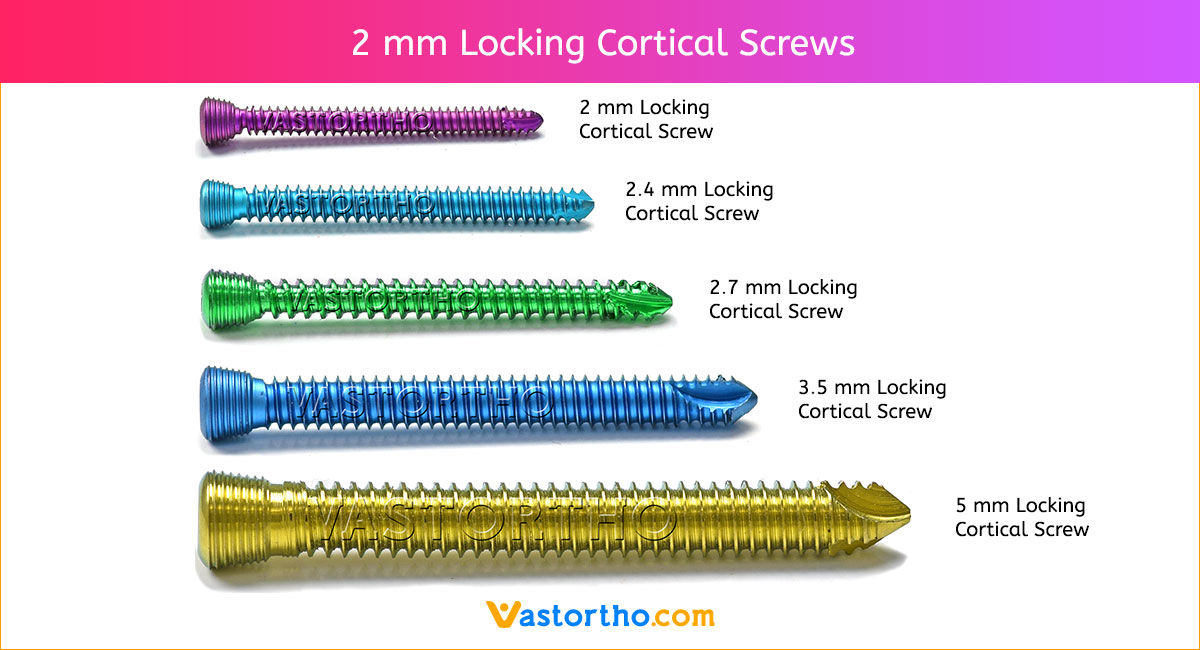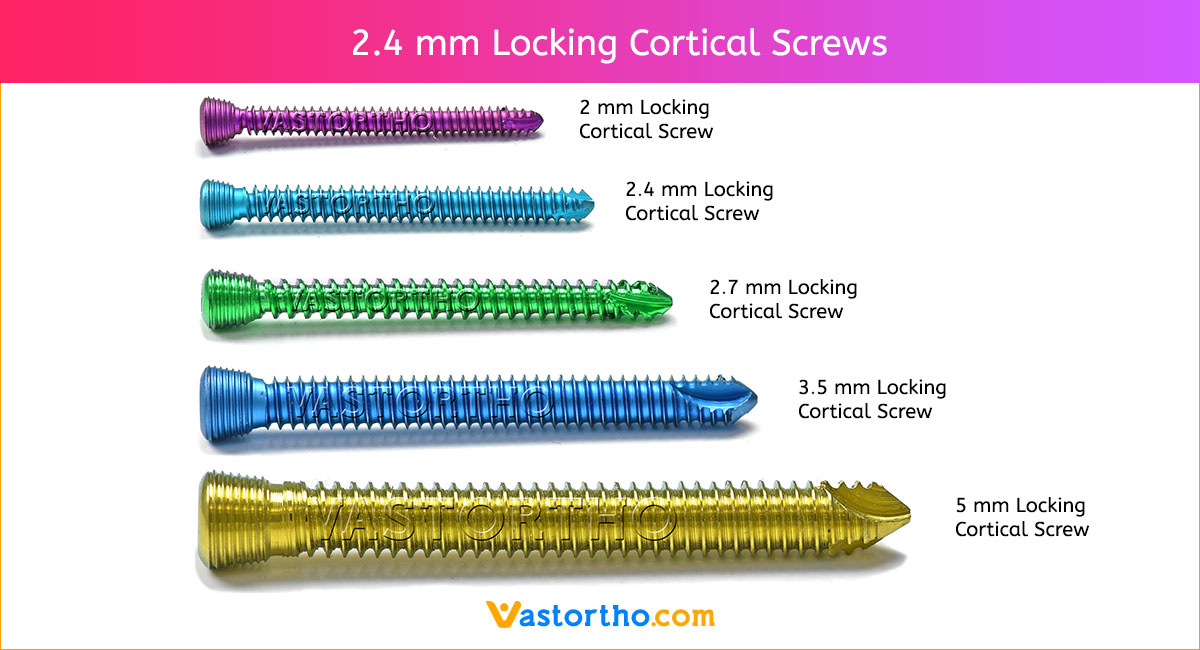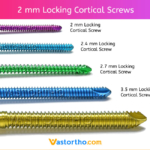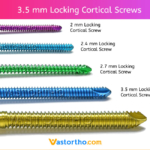5 mm Locking Cortical Screw Specification, Uses & Sizes
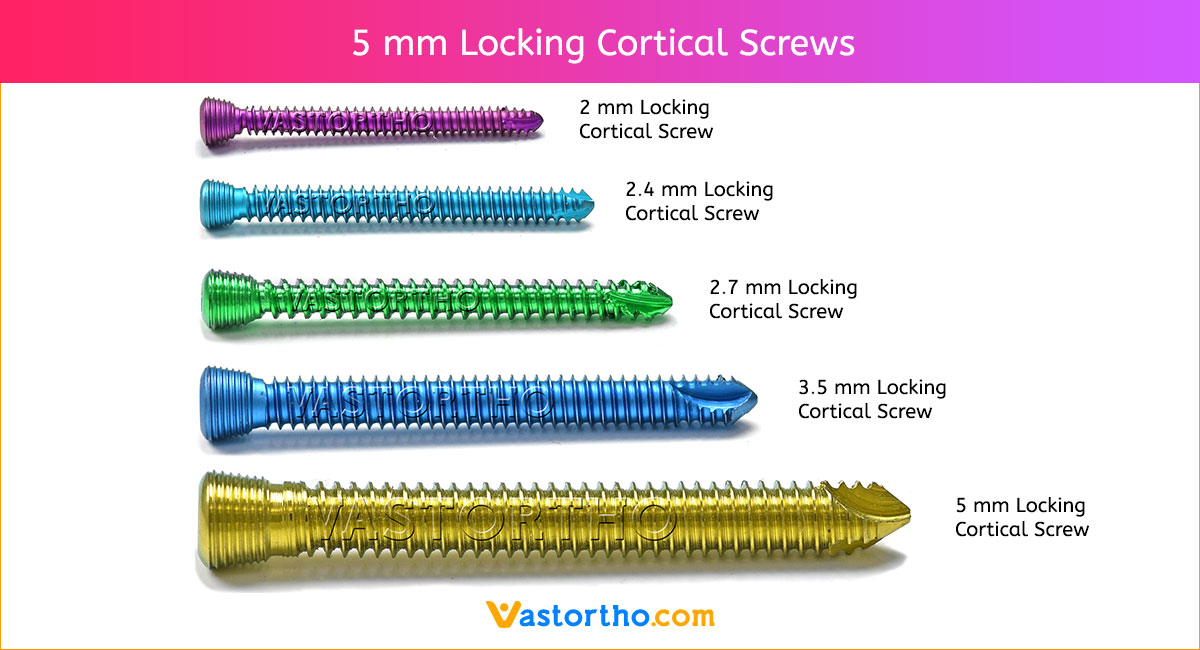
5 mm Locking Cortical Screw Specification
- 5 mm Locking Cortical Screw available lengths are 10mm, 12mm, 14mm, 16mm, 18mm, 20mm, 22mm, 24mm, 26mm, 28mm, 30mm, 32mm, 34mm, 36mm, 38mm, 40mm, 42mm, 44mm, 46mm, 48mm, 50mm, 52mm, 54mm, 56mm, 58mm, 60mm, 65mm, 70mm, 75mm, 80mm, 85mm, 90mm, 95mm, 100mm. 105mm, 110mm, 115mm and 120mm.
- 5 mm Locking Cortical Screw is made from pure Titanium and SS 316L.
- Any additional length sizes of this screw will be made on demand.
- This is Self Tapping Screw. Self Tapping Screws cuts its own thread while being driven into the bone. It makes a small hole while entering the bone which creates a tight friction fit between the threads. This helps fight vibration loosening and allows the parts to be taken apart if needed..
- Instruments are available for this screw such as Bone Taps, Combined Drill & Tap Sleeve, Counter Sink, Depth Gauge, Drill Bits, Drill Guide, Drill Sleeve, Hollow Mill Screw Removal, Reverse Measuring Device, Screw Drivers and Screw Holding Forceps etc.
5 mm Locking Cortical Screw uses
5 mm Locking Cortical Screw is used in fixation of 5 mm locking plates.

